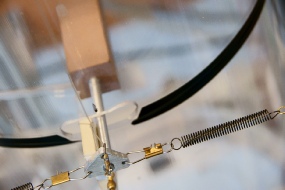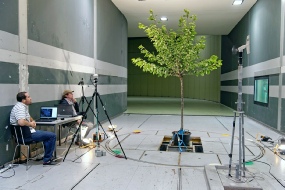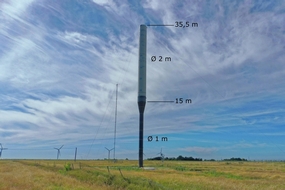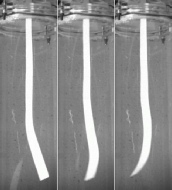Fluids and Solids

When a flexible structure is subjected to a flow, it interacts with it. This is the domain of fluid-structure interactions. When the flow is in air and the structure is elastic, the term aeroelasticity is used.
We are interested in the behaviour of structures, or even plants, which deform or oscillate under the action of a flow. Several types of instability are possible: flutter by mode coupling, torsional stall flutter (responsible for the destruction of the Tacoma Bridge), galloping, vibrations induced by the vortex shedding, response to turbulence or wind gusts.
Static deformations can also come into play and lead to a geometric reconfiguration of the structure, which, when controlled, allows the development of objects that adapt to their environment.
Applications range from wind and civil engineering, to aeronautics, the nuclear industry and plant biomechanics. This research is also useful for the design of innovative energy harvesting systems, using for example flag fluttering, wing fluttering by mode coupling, prism galloping, or riser oscillations due to the periodic release of vortices.






